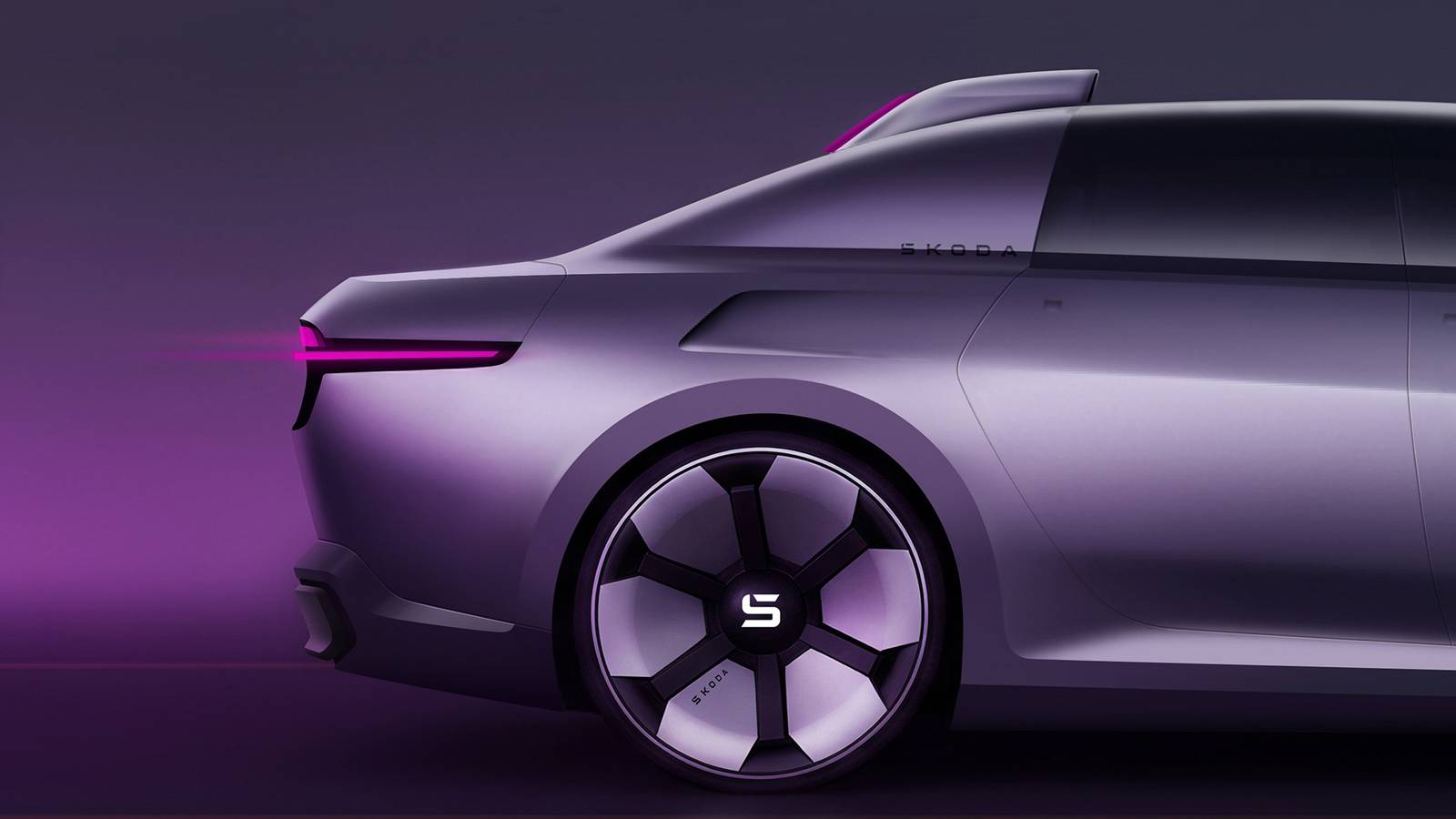The first really big hit from Czech car brand Skoda was a model called the Skoda 100. Over its eight-year run, it became the first vehicle from the brand to top one million cars sold. In a country where owning a car was still rare, this one was an effort to be affordable. 56 years after its introduction, Skoda auto designers have re-imagined that model with the automaker’s current design language. And reinterpreting it as a more premium vehicle, a better representation of what it actually was than what it intended to be.
Skoda designer Martin Paclt was the primary creative on this modernization concept. It’s the latest in a series called Icons Get a Makeover, and it has seen new takes on other classics including the Felicia Fun, the 1000 MBX, and the Skoda 110 R.
Paclt didn’t want to make the car retro-styled, he said. Instead, he wanted to keep the proportions and the character of the original, though he has still left some more direct nods to the unique layout of the original 100.
Like the original, the new car has a very short front overhang. The new car is designed around being electric, but the old one had its engine mounted in the rear. That’s why both have a closed-off nose, as well, with the modern car’s center light strip recalling the chrome line of the original.
A built-in umbrella might seem like the height of luxury, but you could also find it in a model for ordinary people… at least, outside the US.
The unusual design of the original car gave it side windows that appear to be the same pane of glass for both front and rear doors. Instead of copying that, Paclt dropped the rear windshield and made the bodywork that covers the back of the cabin a steel mirror of the glass in front.
Because there’s no rear glass, like a Polestar 4, Paclt added a shark fin that works as an air intake, bringing cooling air to the electric drive system mounted in the back. “Placing the intake above the roof looks cool and effectively directs air to the technical components located behind the cabin. It made sense to maintain the original Skoda 100’s rear-engine philosophy,” he said. The rear fender vents continue that philosophy. The modern car doesn’t have an engine back there, but keeping the link to Skoda’s rear-engine roots is important.
Since this series of concepts is about having fun with design, Skoda hasn’t bothered adding pie in the sky performance figures. It doesn’t have to, though, because no matter what it does, the car will certainly be able to crush the 47 horsepower of the original.
The striking new Vision O concept previews the next-gen Skoda Octavia wagon, expected to go on sale by the end of the decade.
Paclt has spent 11 years with Skoda, saying “I realized early on that I wanted to give form to things.” He has brought forms to light, or maybe that’s light to forms, for the company since then as part of the Skoda Auto headlight design team. That helps explain the elaborate light signature of this car. Paclt has worked on the Enyaq, Karoq, and Kodiaq models at the company, along with the Vision O concept.
We want to hear from you! Share your opinions in the thread below and remember to keep it respectful.
Your comment has not been saved
This thread is open for discussion.
Be the first to post your thoughts.












